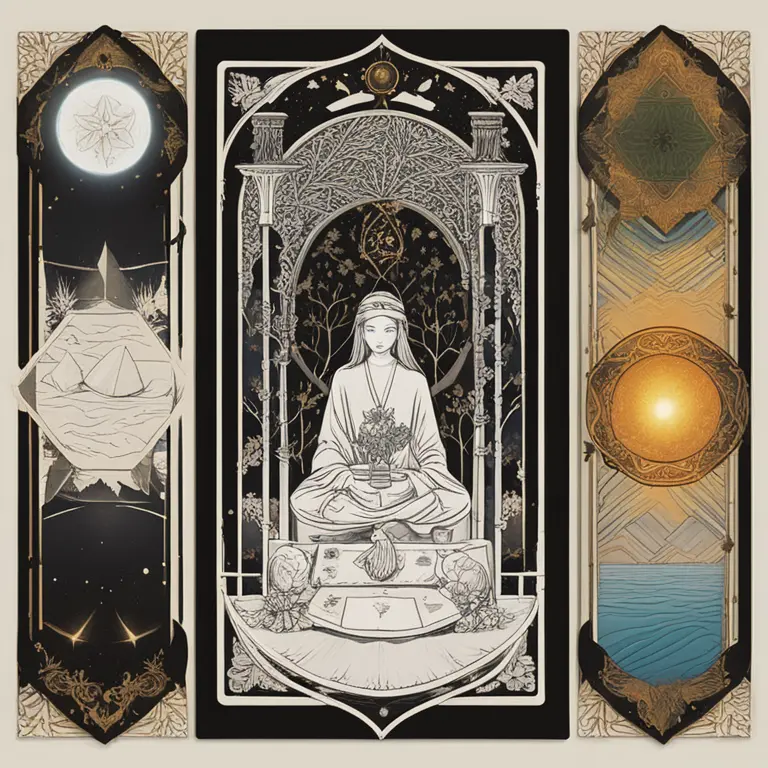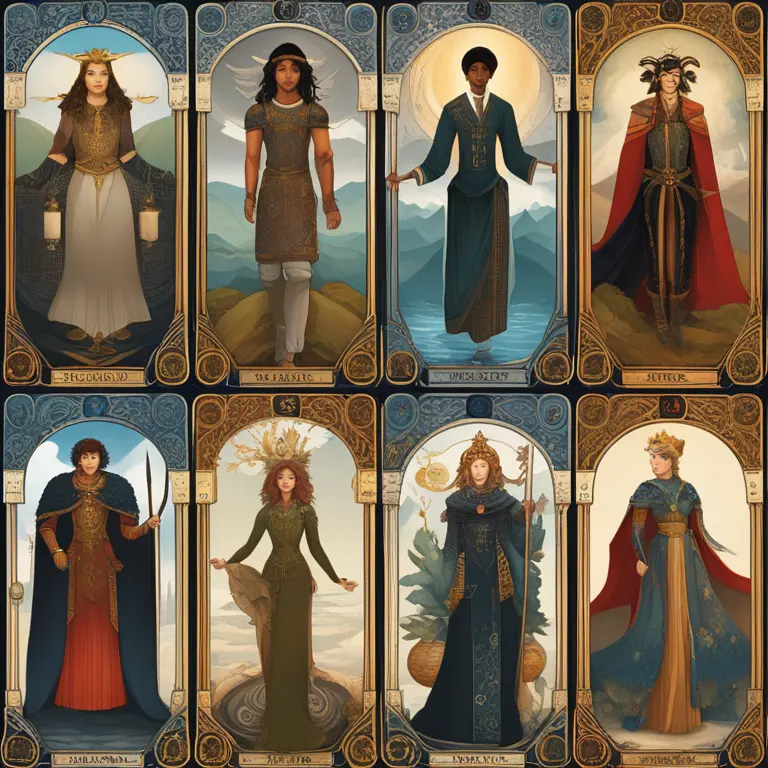
The Basics of Tarot Reading
Tarot cards are more than just pieces of decorated paper; they serve as a mirror to the soul and a window to latent possibilities. The art of tarot reading begins with a question or intention, something the querent wants to explore. The practitioner shuffles the deck, imbuing it with their energy and the essence of their inquiry. A spread is then chosen and cards are drawn, each occupying a specific position with its own implications. These positions can reveal past influences, present conditions, and future potential. With every card acting as a chapter of a bigger story, the reading unfolds a narrative that is both reflective and predictive.

Choosing the Right Spread
A critical step in tarot reading is choosing an appropriate spread, which is the layout of the cards. Each layout is designed for different types of inquiries, from simple yes-or-no questions to complex, multifaceted explorations. Common spreads include the three-card spread, representing past, present, and future, or the Celtic Cross, which gives a more thorough understanding of various aspects of a situation. In 2024 and beyond, the creativity in spreads continues to evolve, with readers designing their own layouts to address the ever-changing needs of those seeking guidance.

Interpreting the Arcana
The tarot deck is divided into two main sections: the Major Arcana and the Minor Arcana. The 22 Major Arcana cards represent life's karmic and spiritual lessons and stand as the core archetypes of human experience. On the other hand, the 56 Minor Arcana cards reflect the trials and tribulations of everyday life. Within the Minor Arcana, there are four suits, each associated with an element and depicting a specific aspect of life. A card's position within the spread, its relation to others, and the reader's intuitive understanding, all contribute to a rich interpretation that can provide profound insights to the querent.

Symbolism and Intuition
Each tarot card is a repository of symbols, and grasping these is key to a successful reading. The imagery, numbering, and even the colors on the cards have specific meanings. As contemporary culture evolves, readers must continue to reflect on how traditional symbols resonate with modern users. A reader's intuition is as significant as their knowledge of these symbols; a strong intuitive sense can highlight subtle connections between the cards and the querent's situation, offering guidance in a way that strictly book-learned meanings might not.

Reading Ethics and Responsibilities
A tarot reader has the responsibility to provide readings that empower and do not foster dependency or fear. Ethical practices include respecting the querent's privacy, delivering information without bias, and being clear about the non-absolute nature of a reading. Given that tarot readings often touch on sensitive aspects of a person's life, readers in 2024 ensure that they provide balanced interpretations that encourage querents to take proactive steps in their lives.
The Continuous Journey
Learning to read tarot is a lifelong journey, one that intertwines knowledge and intuition. As we move further into the digital age, online platforms and modern tarot apps continue to make this practice more accessible. These new tools complement traditional tarot reading and provide users with the means to engage with tarot in a way that suits their dynamic, tech-integrated lives. As a tarot reader grows and evolves, so does their relationship with the cards, reflecting the ever-flowing river of personal and collective consciousness.
Published: 2/8/2024
Modified: 2/8/2024
More predictions
Come back here soon to learn more about yourself and your future


Zodiac Heart Compass: Find Your Emotional Direction
Delve into the secrets of the zodiac to discover how astrological signs guide the emotions and relationships of their bearers.


The Zodiac Libra: Balancing Beauty and Justice
Dive into the harmonious world of Libra, the zodiac sign of balance and beauty, as we reveal what makes Librans unique in astrology.